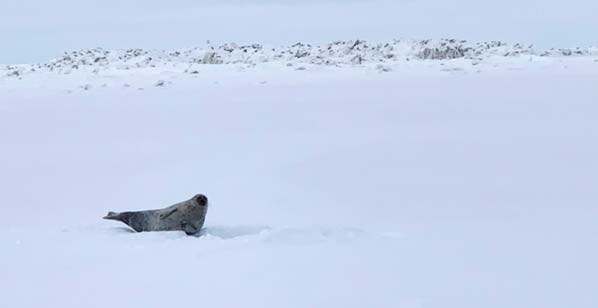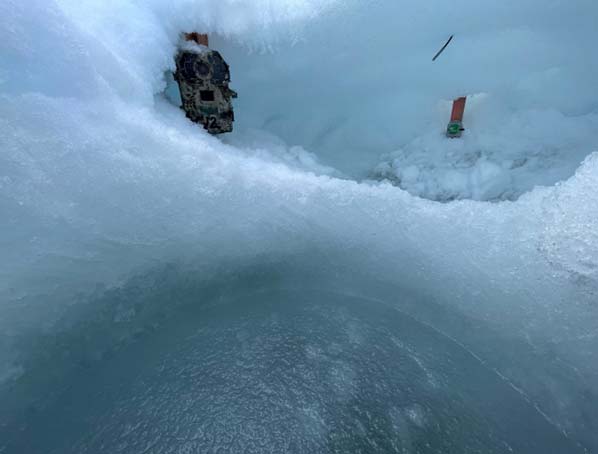Winter Ringed Seal Density
Within Beaufort Sea Oil and Gas Project Areas
In Alaska, ringed seals (Pusa hispida) are an important subsistence resource to coastal Alaska Natives, and important prey for polar bears (Ursus maritimus). Ringed seals create and maintain breathing holes through solid landfast sea ice up to 2 m thick allowing them to use habitat on ice (hauling out to rest, bask, and molt) and under ice (to feed on fish and invertebrates) throughout the winter. Ringed seals also use subnivean lairs built in snow drifts on top of sea ice and within pressure ridges for resting and pupping. Ringed seals were listed as threatened under the U.S. Endangered Species Act in 2012 because predicted declines in sea ice and snow accumulation over the next century were expected to greatly reduce their numbers. In the Beaufort Sea, ringed seal use of landfast ice in winter and early spring overlaps with oil and gas activities (e.g., ice road and gravel island construction, and seismic and drilling operations). Ringed seals spend most of their time underwater and in lairs and are generally not visible from the ice surface, thus determining how many seals may be affected by oil and gas activities is difficult, but necessary, for attaining permits to conduct these activities. In 2022 and 2023, we used two trained wildlife-detection dogs to survey an area in Prudhoe Bay, near Northstar Island, that was previously studied in 1983.
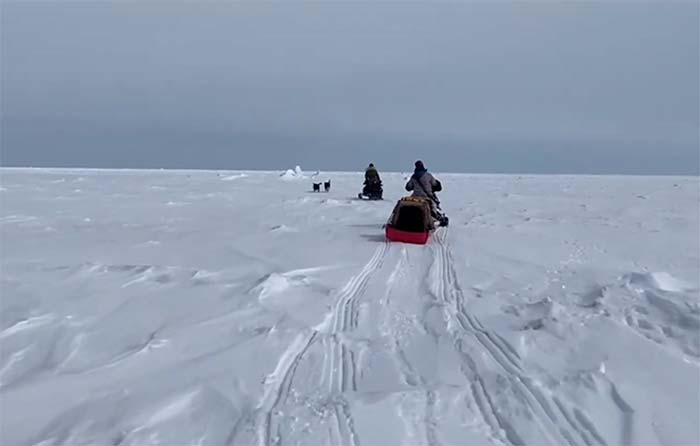

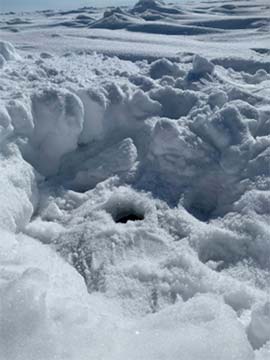
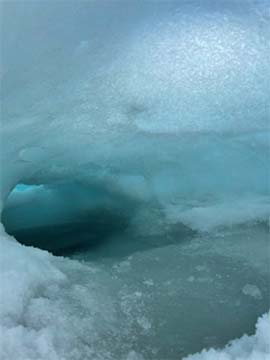
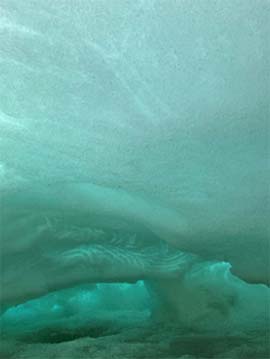
Figure 2. Seal structures included breathing holes open at the snow surface (a), and beneath the snow (b); haul-out lairs built in snow drifts on top of sea ice and within pressure ridges (c); and pupping lairs (d). Pupping lairs are haul-out lairs with evidence of a pup: small tunnels and chambers, shed lanugo (i.e., natal hair), and small seal claw scratch marks (d). NMFS ESA/MMPA Permit No. 20466-01
